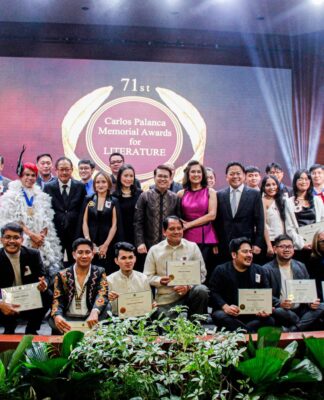EYES are said to be the windows to the soul. And for iridologist Dr. Edwin Arellano Bien, they are also the windows to one’s health.
Iridology, an alternative approach to diagnose illness through the blood vessels of a patient’s iris, is a much-debated treatment in the world. However, Bien boldly pioneered the legalization of the controversial Iridology treatment in the country.
But beyond his advocacy, Bien maintains that he wants to help Filipinos by providing complementary medicine, a combination of the alternative and traditional medical approaches.
Taking the step forward
After graduating from the UST Faculty of Medicine and Surgery in 1987, Bien ventured out of traditional medicine.
“At that time, I read somewhere that if you want to be successful in life, you either have to be very good or different,” he says. “I chose to be different.”
He began practicing alternative medicine.
“Even with our modern technology, not all illnesses are curable. Maybe what we need is to open our minds to other medical approaches,” Bien added. “I think I’m one of the few Filipino doctors who include iris analysis and acupuncture in patients’ prescriptions.”
In the Philippines, the Osaka Natural Health Clinic Inc. is the acknowledged pioneer of Iridology. It was founded in 1995 in Cebu by the Guardo family in response to the call of then Health Secretary Juan Flavier to promote alternative health remedies.
Bien, also a member of Osaka Clinic, and one of the founders of the Iridology Foundation of the Philipines, believes that Iridology can determine inherited strengths, weaknesses, general illness patterns from the thickness and color of the scattered blood vessels in the iris.
“What sets me apart from other doctors is not only do I have a stethoscope, I’ve got a flashlight, too. But that doesn’t mean I’ve turned my back to the conventional practice. If a patient needs to do a lab test or an x-ray, then I prescribe it,” Bien said.
Because of his initiative, the Philippines is now the second country in the world where the practice of Iridology is legal (Russia being the first). Bien is also a consultant of the Philippine Institute for Alternative Health Care (PITAHC), the body which monitors all alternative approaches of medicine, like Iridology and acupuncture, in the country.
What’s up, doc?
Aside from being a practitioner, Bien starts his weekday mornings inside the UNTV 37 studio in Ortigas where he co-hosts a medical interactive show, What’s up Doc?, from 8 to 9 a.m. The show, which can also be seen worldwide through the Net, has been his passion for two years now.
“It is through media where I am able to reach out to more people,” Bien says. Hosting a television show for him is a more effective manner of advocating complementary medicine, rather than going around the country to hold seminars—although that is something he still does when he finds time.
After the show, he hurries to the Le Bien Medical Group office in Cubao, where he is president. Aside from this, he also does consultations with pharmaceutical companies. He is also a columnist for the online Batas Newspaper.
Bien is also overseeing the construction of the first International Medical Spa (IMS) in the world. Here, he said, patients with ailments can go and experience being in a normal spa.
“Mostly, only people without illnesses could enjoy the privileges of spas,” Bien said. “With the opening of IMS, we hope to cater to medical patients so not only will they get treatments, they would be taken good care of by the employees and doctors.”
A building is now being erected in White Plains, Q.C., to house the spa. IMS hopes to open this coming November, in line with the Traditional and Alternative Health Care Month.
But even with a hectic schedule, Bien also sets aside time for charity work that his UST Medicine fraternity sponsors.
Doctor at six
At a young age, Bien was confined in a government hospital for six months. What started as a sore throat resulted in a rheumatic heart disease, depriving him of the chance of playing physical games that a child of his age should enjoy.
However, it was while he lay in bed that he saw the “beauty” of being a doctor. “Doon ako nangarap. I told my parents that one day, hopefully, I will be a doctor,” says Bien. “Lahat ng mga naging decisions ko later in life, patungo doon sa vision na iyon.”
As his parents couldn’t afford to send him to medical school, Bien studied hard and became a consistent dean’s lister in his Medical Technology course in UST and interned in the United States Air Force Hospital in Subic, working his way through medical school.
The once rheumatic boy who watched doctors walk by his bed, tending people they barely even know, has certainly kept his promise to serve his fellow men through alternative medicine.
Although the complementary medicine he advocates is criticized by many, Bien says nothing can be more rewarding than doing what he loves and, at the same time, helping a lot of people.














